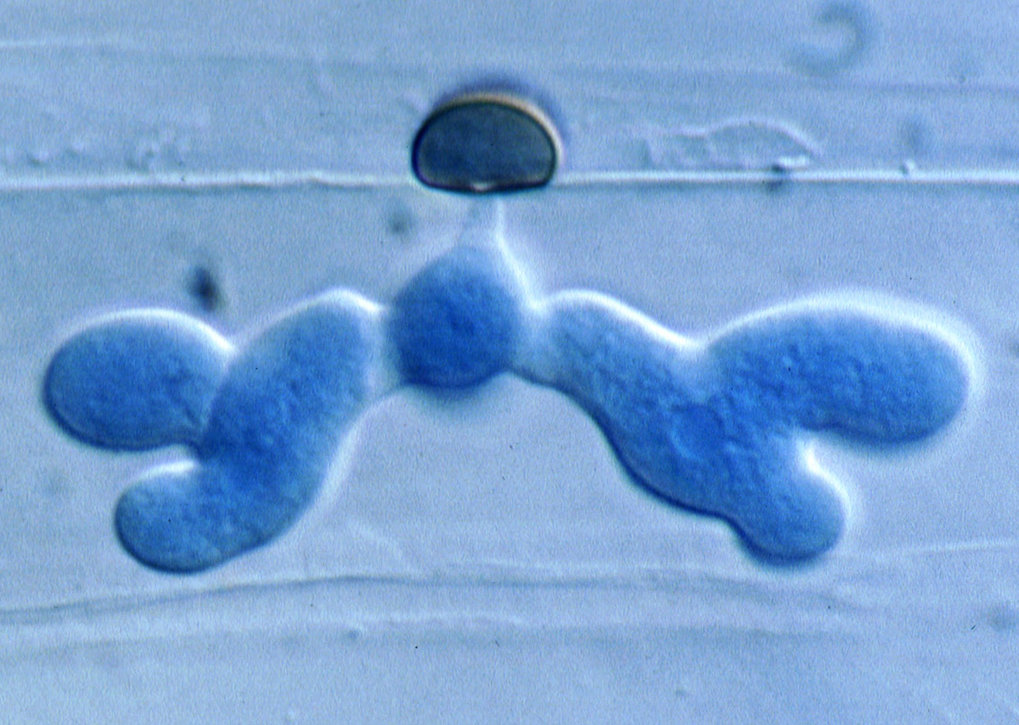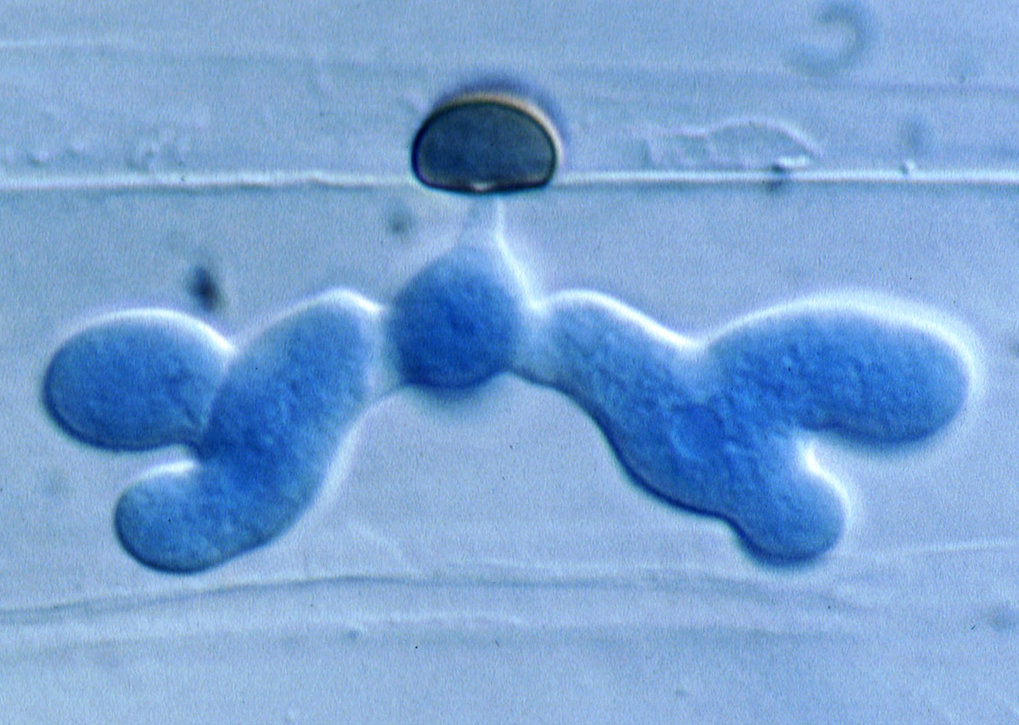Differences in the genomes of related plant pathogens
Even in closely-related species, life-style moulds the genetic make-up of pathogens and how their genes are used
Many crop plants worldwide are attacked by a group of fungi that numbers more than 680 different species. After initial invasion, they first grow stealthily inside living plant cells, but then switch to a highly destructive life-style, feeding on dead cells. While some species switch completely to host destruction, others maintain stealthy and destructive modes simultaneously. A team of scientists led by Richard O'Connell from the Max Planck Institute for Plant Breeding Research in Cologne and Lisa Vaillancourt from University of Kentucky in Lexington have investigated the genetic basis for these two strategies. The researchers found that pathogen life-style has moulded the composition of these fungal genomes and determines when particular genes are switched on. They also discovered surprising new functions for fungal infection organs.
Colletotrichum fungi cause rots and leaf spot diseases which are spread by wind and rain splash. They cause devastating economic losses on food and biofuel crops running into billions of euros each year. While some species attack many different plants, others are highly selective and attack just one host plant. The two species investigated by O'Connell and his colleagues differ in their life-style and their host specificity. One species preferentially attacks crucifers, including thale cress (Arabidopsis thaliana), a model plant important for biologists. Within just a few hours, this pathogen switches its metabolism towards the complete destruction of the plant cells. For this fungus, benign coexistence and massive destruction are separated in time. The other species studied is specifically adapted to maize. In one part of the plant it produces proteins to promote symptomless coexistence, while elsewhere it produces proteins to break-down and digest plant cells. In this case, the two life-styles are spatially separated.

The strength of this work, published in Nature Genetics, is that the researchers analysed both the genome and transcriptome of these two fungi. "The transcriptome reveals which genes are switched on and when. Several other fungal genomes have already been decoded, but never with such detailed information about if and when each gene is used during plant infection", says O'Connell. For example, both genomes have similar numbers of genes for hemicellulase enzymes, with which the plant cell wall is decomposed. However, the maize fungus switches on many more of these genes because the cell walls of maize contain more hemicellulose than do plants attacked by the Arabidopsis fungus. "This difference could not have been identified simply from cataloguing the numbers of such genes in the genome: transcriptome data are essential to obtain this information", explains O'Connell.
The genomes of the two pathogens are similar in size, but the Arabidopsis fungus accommodates more genes in its genome, probably as a result of its broader host range. A pathogen that attacks a single plant requires fewer genes than one which colonizes many different plants. This is especially true for "effector" genes, which are required by the fungus to protect itself from the plant's defense responses. Both fungi have remarkably large numbers of genes for producing secondary metabolites, which are small molecules with potential roles during infection. "We are not aware of any other phytopathogenic fungi that produce so many secondary metabolites", says Jochen Kleemann who, together with other colleagues from the Max Planck Institute for Plant Breeding Research in Cologne, was also involved the study. "The genes for these products are switched on very early on during infection and are therefore potential targets for plant protection. But first we need to understand more about the functions of these molecules", continues Kleemann.
The scientists also discovered previously unknown functions of the fungal adhesion organ, the appressorium. The appressorium is formed after a fungal spore lands on the leaf surface and builds up a high pressure, with which the fungus pushes itself into the interior of the plant cell, like a finger into an inflated balloon. "On a leaf, the adhesion organ switches on completely different genes than when it is located on a plastic surface. It must in some way recognize where it is", says O'Connell. The adhesion organ would thus appear not only to open the door into the plant cell, but also to sense the presence of the plant. "Appressoria were discovered almost 130 years ago, but it is only from our research that it has become clear that they also have a sensing function", says Kleemann.
